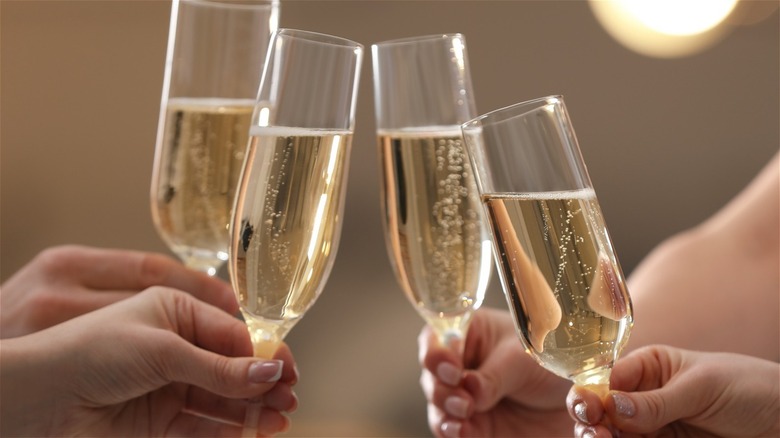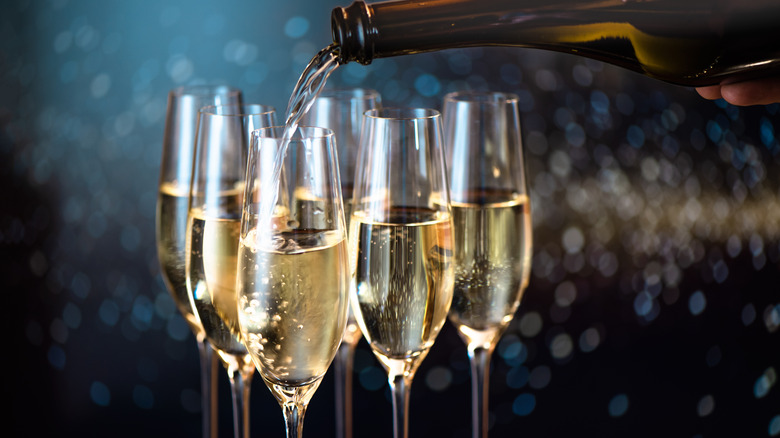The Alcoholic Beverage That Was Once Considered An Energy Drink For Athletes
Professional athletes generally tend to live by a very strict set of rules that are outlined by their coaches and trainers. But when it comes time to compete, the rules get even more stringent. Caffeine is an especially slippery slope. For nearly two decades, too much consumption of caffeine was banned by the World Anti-Doping Agency at the Olympics (via National Coffee). Considered to be a performance enhancer, even a little more than the accepted level of caffeine could risk athletes being removed from the games on the grounds of doping. Although the ban has since been lifted, caffeine continues to remain on the agency's watch list.
Alcohol is another grey area. While the International Olympic Committee sets no ban on sipping alcohol during the Olympics, athletes have to keep in mind the laws of the host city as well as any policies set by their own countries (via Bustle). During the 2022 Winter Games, Team USA did not allow alcohol in its residence inside the Olympic Village. Another incident in 2016 had Dutch gymnast Yuri van Gelder kicked off from the Olympics in Brazil for drinking alcohol.
While the repercussions of consuming alcohol at competitions are often grave for athletes today, that wasn't always the case. There was a time when a certain alcoholic beverage was not only permitted, but even served at the Olympics as a mid-competition energy drink (via Atlas Obscura).
Champagne, brandy, and rat poison were perfectly acceptable energy drinks
While you may catch an athlete sipping on electrolytes or Gatorade at the Olympics today, energy drinks in the 20th century looked a tad different. According to Inside Hook, not only were champagne, brandy, and strychnine (rat poison) considered to be effective performance enhancers, the drinks were often given out as energy drinks during competitions.
The practice of gulping champagne or rat poison can be traced back to imperial China and ancient Greece, per Massey University, but its use in competitions began in the 19th century (via Atlas Obscura). Athletes who took part in foot races at the time were recommended regular sips of bubbly to help them get to the finish line. Alcohol's sugar content made it seem like an effective energy booster, low doses of strychnine were considered a remedy for exhausted athletes. The refreshing champagne was particularly well-liked.
The famous Greek athlete Spiridon Louis, who won the first Olympic marathon in 1896, was reported to have chugged cognac only 10,000 meters before the marathon's finish line (via World Athletes). In 1908, French athlete Albert Corey credited his Chicago Marathon win to regular swigs of champagne throughout the race (via Torontoist). While the modern Olympic games may not be an entirely dry affair, you won't find any athlete crediting their win to a glass of bubbly, either.

